Planets and Moons
1. Introduction
Commonly known as the oldest branch of science, astronomy is the most unique field of research because of how much it affects us all. While chemistry is the study of manual changes and biology is the study of autonomous changes, astronomy is the study of changes we cannot control. It is also the study of implausible theories that eventually could be proven true. There are theories about how temperature affects the vibrations of the tiniest atoms, and there are theories held about supermassive suns that can make a yellow mainstream star seem like a dot.
For most people, astronomy represents a mysterious and exciting world that covers a vast time frame of history, dating back billions of years into the past and back to when planets were just atoms in the darkness of space. This course will focus on celestial bodies; this is the name we give to objects like stars, planets, moons, and asteroids. The reason we call objects “celestial” is that, to our ancestors, they appeared to reside in the distant heavens.
Note that this course includes examples both “in character” (that is, from the Star Wars universe) and “out of character” (from our universe).
Planets are formed through accretion. As a star forms, dust, particles, and gas get pulled into the star’s core and form a disc called the solar nebula. The remnants start to orbit the star and slowly build into objects called planetesimals. Gravity pulls these planetesimals to one another, but sometimes they can get caught in bigger celestial bodies. A real-life example would be one of the theories about the formation of the Earth’s Moon. The theory is that during the Earth’s formation, an asteroid smashed into the proto-Earth, and the excess dust and particles escaped, colliding and forming the Moon we see today. The same circumstances lead to asteroid belts like the Kuiper Belt, but the two opposing gravity fields never let the asteroids accrete into larger bodies.
2. Planet Types
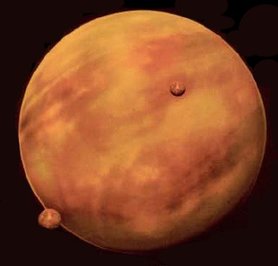
Gravity is the force of attraction between two bodies with mass. The greater the mass, the greater the gravitational force. This factor explains why terrestrial planets tend to be closer to the Star they orbit. Heavier elements are pulled closer to the star, and the lighter elements are left farther away. All the heavier elements accrete into smaller rocky terrestrial planets while lighter elements accrete into larger gas giants. Planets are considered dead when their hot molten cores are cooled and solidified. The core drives change on the surface of a planet: if the core goes cold, the surface will become stagnant and remain still. The core of a planet also affects the surface of the planet. Through pulling and tugging, tectonic plates are forced to collide and scrape against one another, and subduction zones are created. This is where the thinner and less dense crusts collide against thicker land plates and sink underneath.
Gas planets are different from terrestrial planets because they have a surface that is made up of swirling gases like hydrogen, helium, and ice. Being so far away from their star, the temperatures can get cold enough to cool the gas particles down into a liquid form, which remains calm below its boiling point.
One of the most well-known gas planets is Bespin. Bespin is a gas giant that was mined for its Tibanna gas. Tibanna was found in the atmosphere and cultivated in Cloud City. Taloraan, Kril’Dor, and Genarius were other gas giants where Tibanna was mined. We know gas giants as being far away from the star they orbit and have frozen surfaces where the gases move across, but there are different types of gas planets. Not all gas planets are "giants"; smaller gas planets are called gas dwarfs. Gas planets that are close to the star they orbit are called hot gas giants/dwarfs. Hot gas planets will have a much more volatile atmosphere due to the gases being heated. Remember, the hotter something is the more its particles vibrate, creating kinetic energy.
3. Orbits

The orbit of a planet is critical to the environment seen on the surface. The two key points in a planet’s orbit are perihelion and aphelion. A planet is closest to the star at perihelion and farthest at aphelion. The common misnomer is that when a planet is at aphelion, the temperature is the coldest. While there is some truth to this statement, the true deciding factor of a planet’s surface temperature is direct sunlight. A planet can experience its winter at perihelion if the planet’s tilt is away at that point. The axis of rotation of a planet can change over millions of years. If the planet has a moon, its tilt will be more stable. Some planets can change their tilt so extremely that the planet’s magnetic field causes the poles to flip. The axis of the planet can vary in degrees, from zero degrees where the star remains over the equator to 90 degrees where the star hovers over one of the poles. In addition to a planet’s tilt changing over time, the position in orbit can change over time as well, along with the shape of the orbit itself. A planet’s orbit can fluctuate between being more and less elliptical. Remember, all of these changes happen on a time scale of tens of thousands to hundreds of thousands of years and are called Milankovitch Cycles. Sometimes, all of the extremes can happen at once. A planet can be tilted away, at aphelion, and with the most elliptical orbit, causing devastating ice advances and droughts.
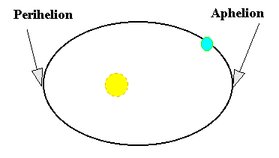
4. Planetary Atmospheres
Type I: Breathable - These atmospheres are breathable by most species found in the galaxy. Their compositions are primarily oxygen, nitrogen, and hydrogen. Examples of planets that have Type I atmospheres are Hoth, Coruscant, and Corellia. Granted, a species who have evolved to survive in a Type IV atmosphere will find Type I the most deadly.
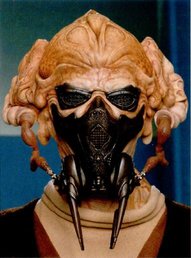
Type II: Breath Mask Suggested - Dorin is an example of a Type II atmosphere planet. To the Kel Dor their planet is breathable, but to most, the helium atmosphere is dangerous. Type II atmospheres are survivable for most species in the galaxy over short periods. Longer periods of exposure can cause harm or damage. It is not uncommon to find life on these planets, but life on these planets will have evolved to their specific environment. Sullust has two atmospheres; there is a Type II atmosphere on the surface but a Type I atmosphere underground. Other examples of planets that have a Type II atmosphere are Gorsh, Rordak, and Torize.
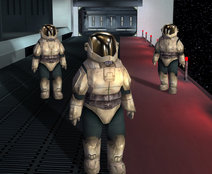
Type III: Breath Mask Required - Type III atmospheres have a dangerously low level of oxygen, nitrogen, and atmospheric pressure. The lack of breathable air makes these planets dangerous without life support equipment. Without a breath mask, a visitor would be incapacitated and eventually die without help. Examples of planets that have a Type III atmosphere are Kessel and Korad.
Type IV: Environment Suit - Planets with Type IV atmospheres have a composition that consists of hazardous gases. These gases could be toxic, volatile, or have no atmosphere at all. The chance of finding indigenous life on these planets is very rare, but not impossible. Exposure to these atmospheres without a suit will cause certain death. An example of this would be the planet Gand with its ammonia-based atmosphere. Similar to Sullust, Taloraan has a mixture of different atmospheres. At high altitudes, Taloraan has a Type I atmosphere, while at lower altitudes, the atmosphere is a Type IV.
5. Planetary Environments
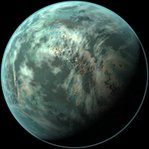
Terrestrial planets can be broken down into further subcategories based on their environments.
Agriworlds: These worlds are dedicated to the agricultural industry. Their exports will be various types of food, including meats and produce. Examples of Agriworld planets would be Taanab, Broest, and Chandrila.
Aquatic: As the name implies, Aquatic planets have their surfaces covered primarily in water. The inhabitants of these planets survive by either being able to breathe underwater, living in underwater cities, or cities on the surface. Examples of these planets would be Kamino, Mon Cala, and Ahch-To.
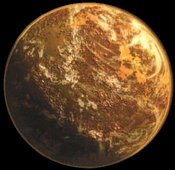
Arboreal: These planets are also known as Jungle planets. Their surfaces will be covered in dense foliage, rivers, and often have indigenous species that have high intelligence. Kashyyyk, Takodana, and Dathomir are examples of Arboreal planets. Planets can share environments, for example, Dathomir. On Dathomir, there is "The Great Desert," but the majority of the planet is a thick, dense jungle. The planet's classification stems from which environment is in the majority. That is why Dathomir is an Arboreal planet.
Desert: As the obvious name suggests, desert planets have sand-covered surfaces. Examples of Desert planets would be Ryloth, Geonosis, and Tatooine. Inhabitants will be hardened by the harsh environment due to a lack of water and extreme winds.

Arctic Tundra: Also known as Ice planets, Tundra planets have a frozen surface. Examples of planets with a Tundra environment are Hoth, Anteevy, and Ilum. These planets are the most uninhabited, but on planets such as Anteevy had Imperial officers lived on the planet.
Swamp: Similar to Arboreal planets, Swamp planets have thick foliage. The differences come from the marshy surface below the foliage. Arboreal surfaces will be dry, while swamps will be a sea of wetlands and stagnant water. Examples would be Dagobah, Gentes, and Rishi.
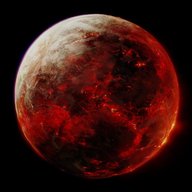
Volcanic: These planets have a molten surface of lava that flows like rivers or have constant eruptions. Note, there is a difference between magma and lava. Magma is molten rock below the crust of a planet. The pressure below the surface traps gas molecules in the magma, and once on the surface, the gas molecules can escape, changing the chemical makeup between the two. Magma becomes lava. Examples of Volcanic planets are Mustafar, Sullus, and Lola Sayu.
6. Conclusion
Planets are shaped by their orbit and location in a star system. Stars and planets might have similarities, but no two are identical. We know the fuel the stars run on, the differences between planetary surfaces, and the differences between planet classifications. It is important to know the planet before it's too late to do anything about it. Once on the surface, your fate might already be sealed without you even knowing it, but the same could be said about your enemy if you know how to use the battlefield as an additional weapon in your arsenal.
7. Dark Jedi Brotherhood Systems
Here are the Clans and their home planets.
Arx - Brotherhood Citadel
Arx is a terrestrial planet orbiting the star Arx Major. It is the home to the Brotherhood and the Council. The planet has a type I atmosphere and is capable of supporting life. Its terrain includes a dark blue ocean that engulfes just over half the planet, with several large islands that make up three distinct continents. Lush and colorful from the concentration of greenhouse gases, the equatorial regions of Arx’s surface can be described as ranging from tropical and boreal to barren, while tectonic action has formed mountainous ridges in the center of some continents. An icy tundra at the farthest tip of the planet spills over onto the largest of the three continents.
Seraph - Seat of Clan Scholae Palatinae
Seraph is a moderately sized terrestrial planet in the Caperion System. It is the planet third closest to the star, Caperion. Seraph is a world perfect for life to flourish, with a variety of terrains, a breathable atmosphere, and oceans of water. It is the only heavily inhabited planet in the Caperion System. It has three main continents and is home to Clan Scholae Palatinae. It has become a major economic power in its sector. It has a standard rotation of 24 hours and a yearly orbit around Caperion of 450 days. It has a Type I atmosphere
Kasiya - Seat of Clan Taldryan
The moon has a cold climate reminiscent of a permanent winter and an atmosphere breathable to oxygen-breathers, such as humans. The tundra surface is overgrown by dwarf shrubs, sedges, grasses, and mosses in the twin grassland regions and the Eastern and Western Frostlands. In some areas, the tundra surface was nearly destroyed by the sudden growth and development of the Biask Canyon and Great Kasiyan Desert, where nearly all of the moisture evaporated or disappeared. The moon’s low temperatures often leave the surface slippery and somewhat hard to travel. Kasiya is home to several settlements of differing sizes, with the most prominent being the Taldryan capital and seat of power: Port Kasiya.
Kiast - Seat of Clan Odan-Urr
Nestled as the second planet from the Kiast system binary suns, Kiast is also a peculiar gas giant. Not too hot nor too cold. This planet is also another unusual orbiter, as its day cycle is lengthened into 24 hours, and its yearly orbit is an extended 426 days. One theory suggests that when created, the binary subdwarf system it formed in, developed Kiast under high gravitational pressure from its parent stars into a small, but active tectonic planet. Its revolution is an imperfect ellipse, rather than a circle, which creates a very unique effect on the planet's surface. Its proximity to the binary star, coupled with its irregular orbital path, has a straining effect on its tectonics as the planet is constantly pulled and pushed against the gravitational forces of the stars. Formed to hold both Type I and Type IV atmospheres, its surface is covered in a thick concoction of Helium, Hydrogen, and Tibanna Gas. The denizens use hovering cities above the clouds to live.
Selen - Seat of Clan Arcona
Sitting in the outer orbit of the Dajorra sun, Selen is a terrestrial planet that orbits Dajorra. It has a Type I atmosphere and is capable of supporting life. The terrain consists of between 85-90% ocean with scattered island landmasses. Its temperate climate supports a variety of biomes, while the equatorial location of many of its islands lends to jungles, mountains, and grasslands, with two polar caps. It has one moon, Boral.. The planet is gigantic compared to other Clan planets, with a calm 28-hour day cycle and a sluggish 454-year orbit. The distance from the sun creates a slow orbit for the moon as well. Due to the nature of the Selenians being social hermits, they refuse help from others, exporting only weapons and credits. et.
Sepros - Seat of Clan Naga Sadow
Known as an oddity in the Brotherhood, Sepros is a twin planet located fourth from the Orian sun. Many scientists believed that Gamuslag was the moon of Sepros, yet they found the two shared a central mass and shared the year orbit of 470 days. Due to their proximity, Sepros has a 36-hour day cycle, despite being slightly smaller than the average habitable planet diameter. Sepros has no exports or imports since all of the minerals ran dry millennia ago. Sepros is a type I planet.
Aliso - Seat of Clan Plagueis
Aliso is a terrestrial world less than a few thousand years removed from an extremely active volcanic period, which culminated in a volcanic winter. Currently, the climate of Aliso is a perpetual, worldwide autumn climate that is a result of having only recently recovered from ecological disaster. As a result of recent geologic history, the ecosystem of Aliso is also still in recovery mode, with a low diversity of life, and very few complex organisms inhabit the world.
Zsoldos - Seat of Clan Vizsla
The geography of Zsoldos varies from region to region. The majority of the landmass consists of desert expanses that would be better described as blasted lands. Not much grows within these biomes, save for the mountainous terrain, leaving a dust-storm-covered harsh wilderness. Within more vibrant regions, grasslands and tropical forests can be found with all the flora that comes with it. Thick canopies blot out the sky within the forested areas, while the grasslands are the realm of hunters and prey. Tundras can be found at each pole, with massive glacial shelves creating a network of hidden plateaus hidden from view. More than half the planet is covered by oceans, offering up fathomless, unexplored depths pockmarked by islands where some say artifacts from the planet's natural inhabitants are buried.
Please log in to take this course's exam